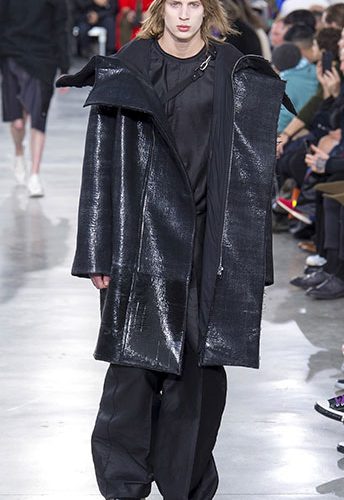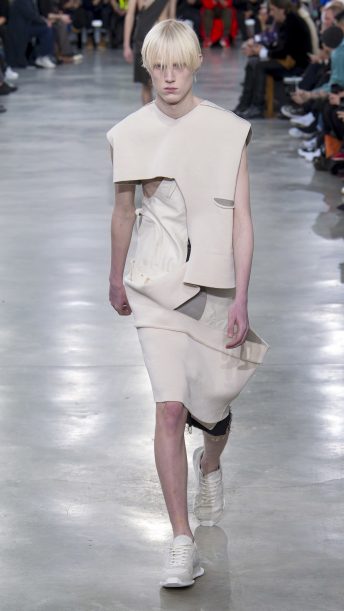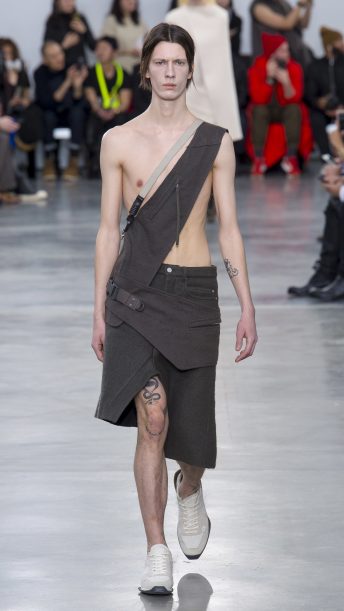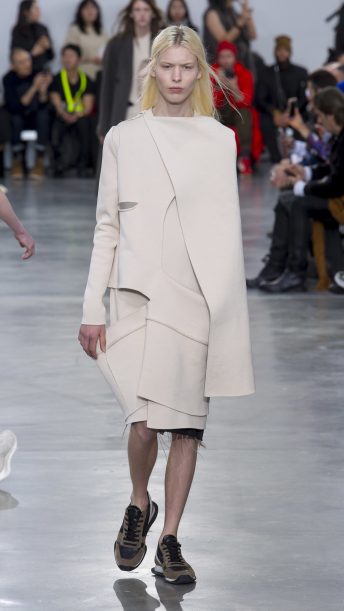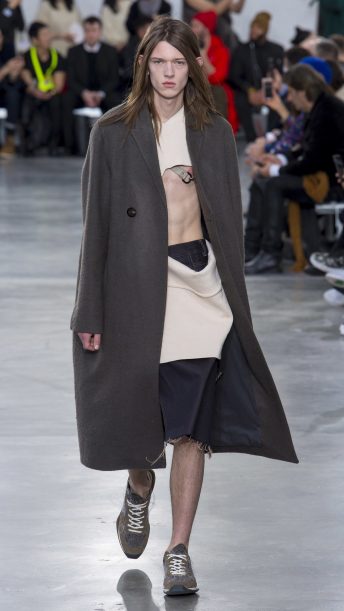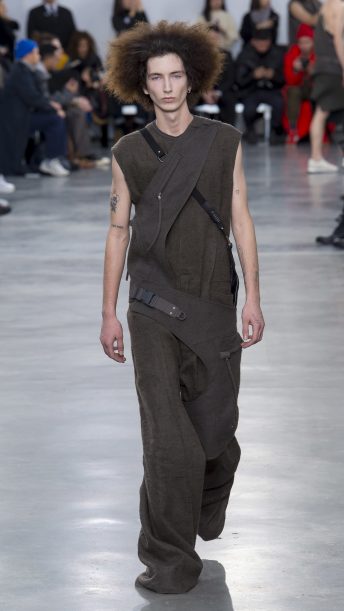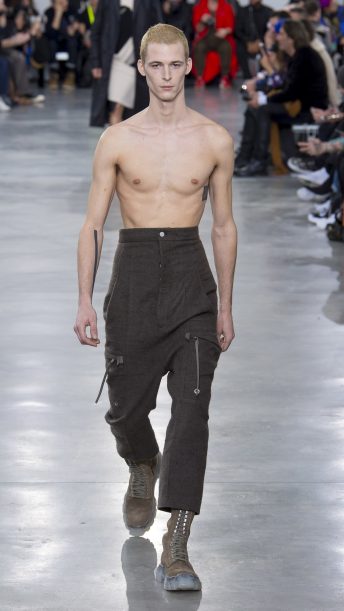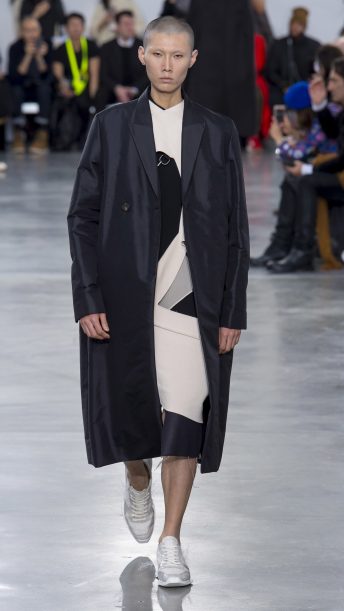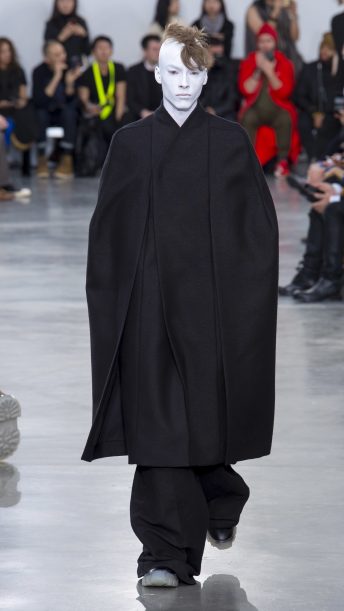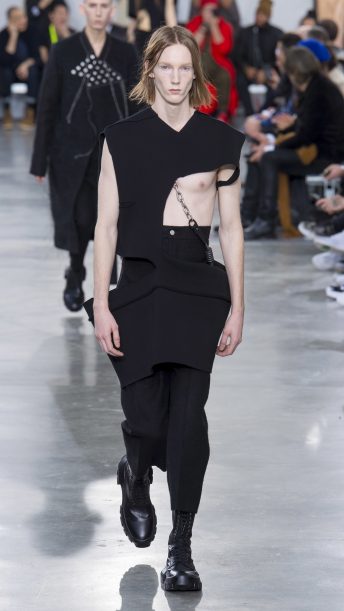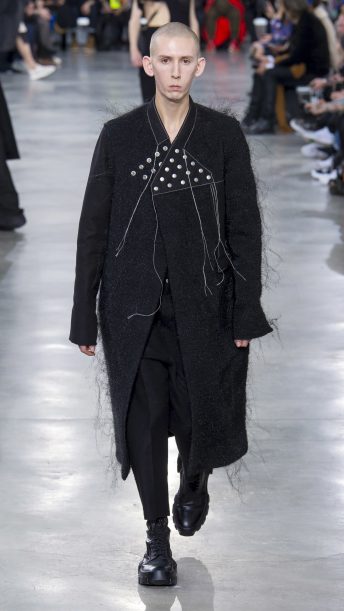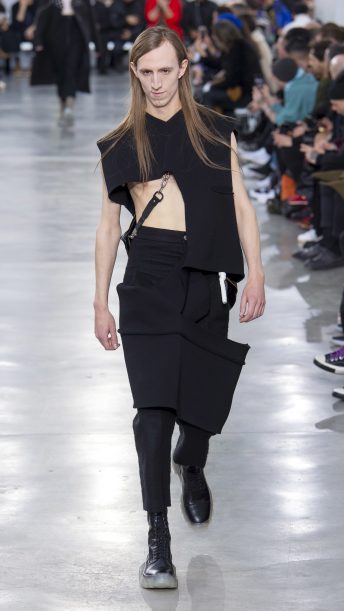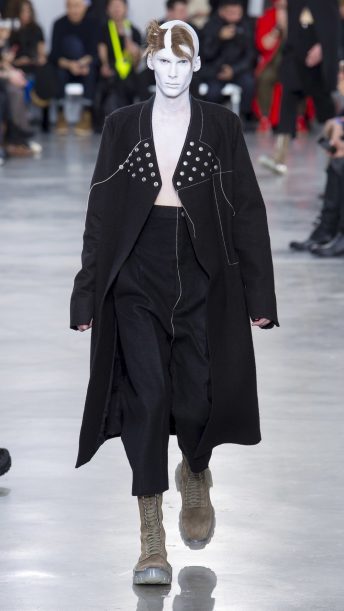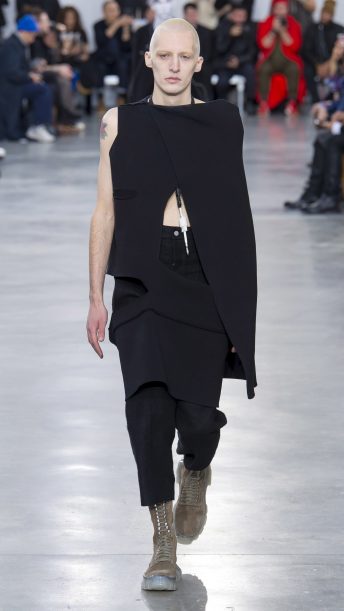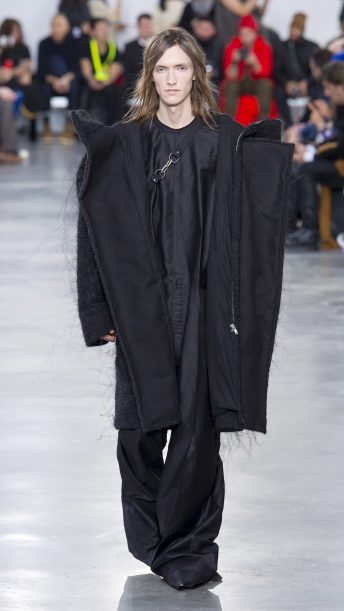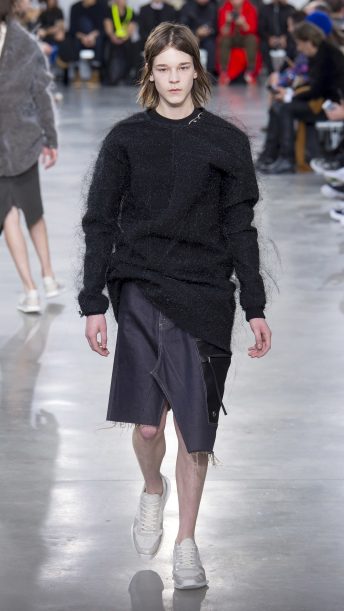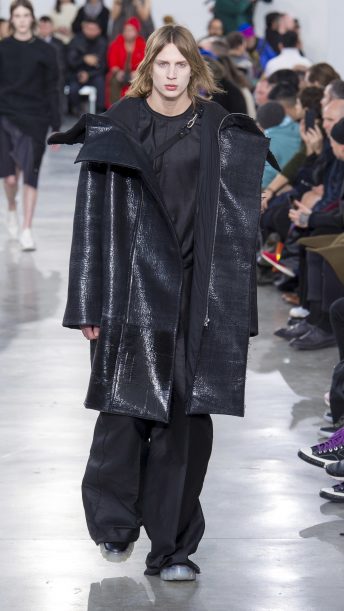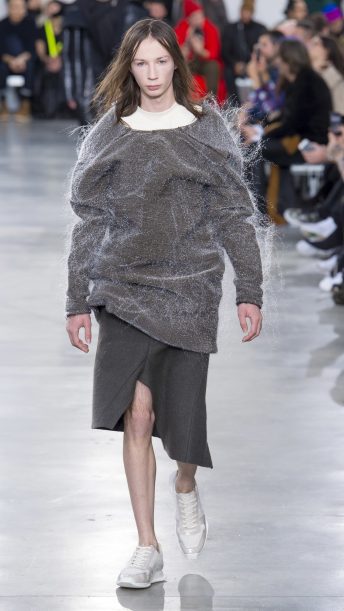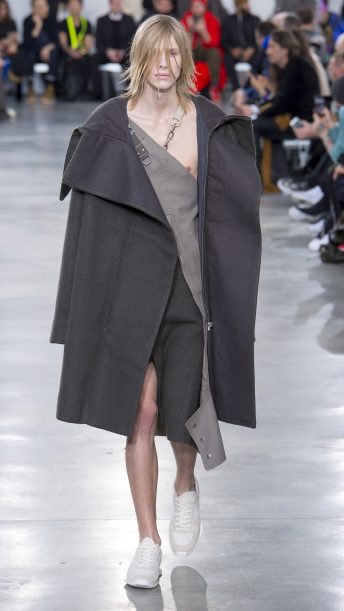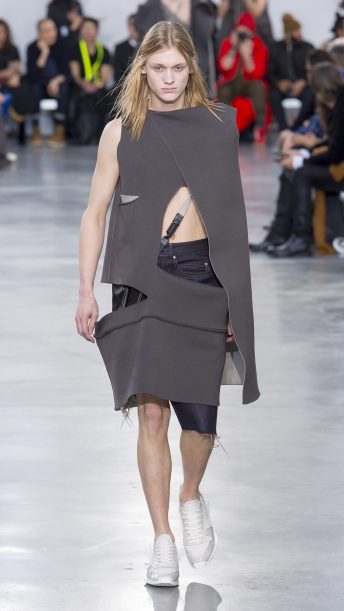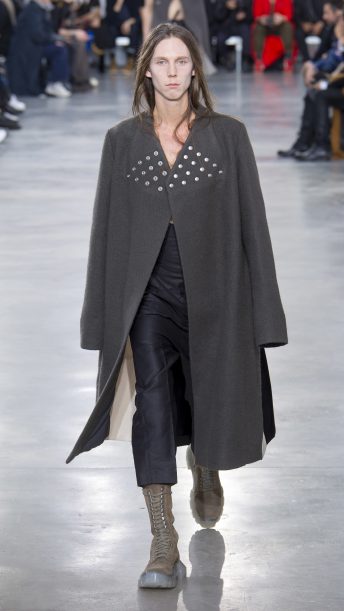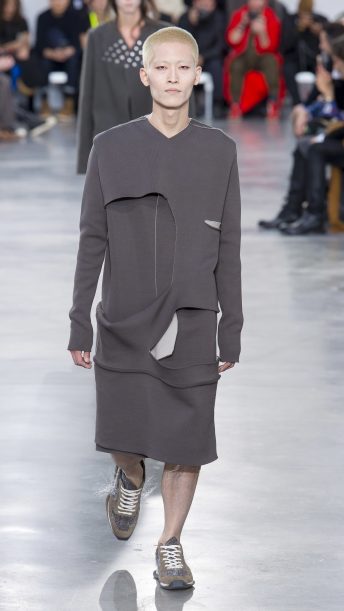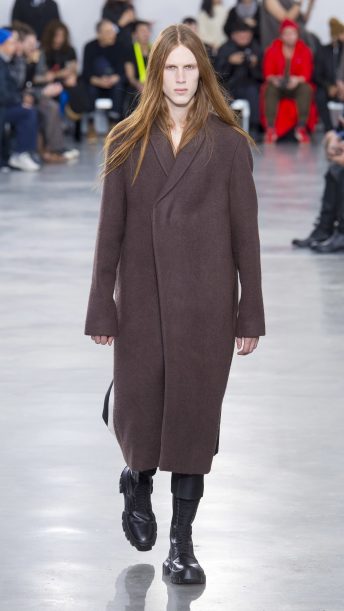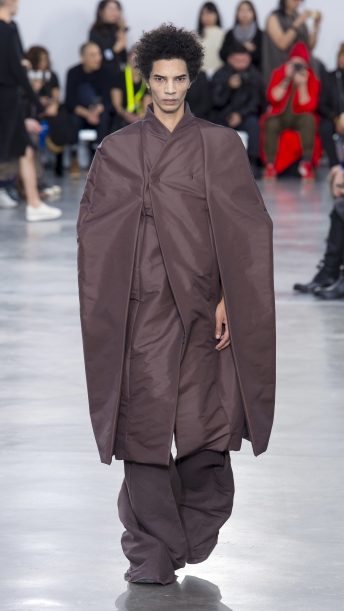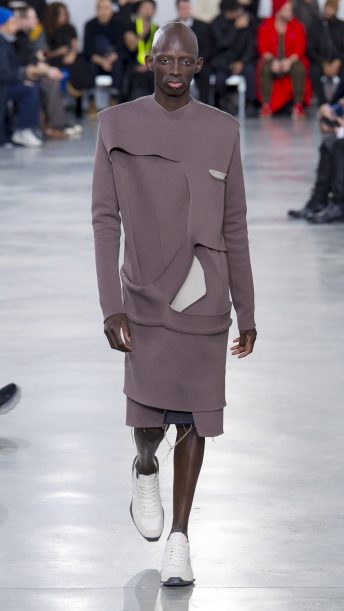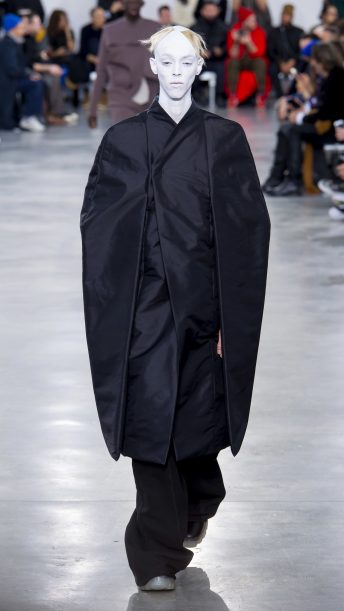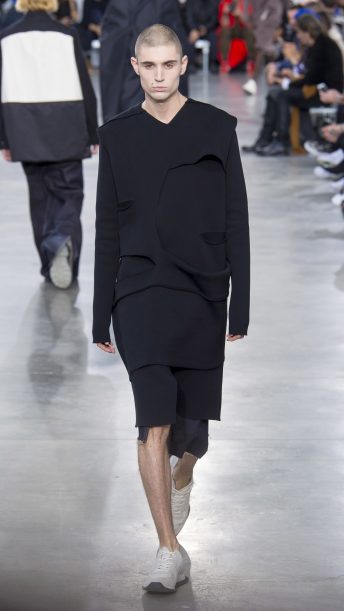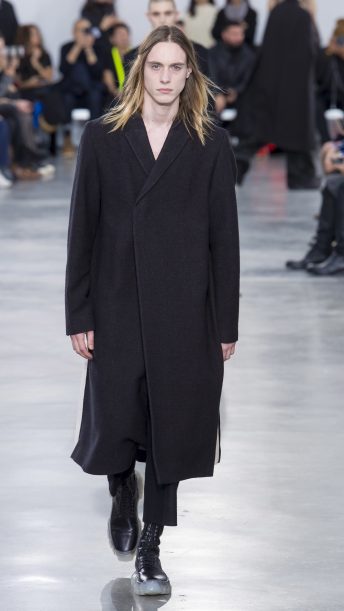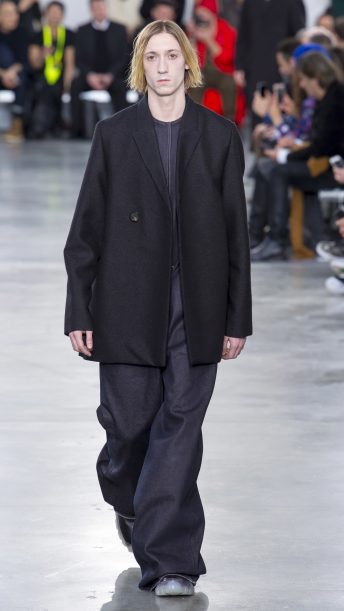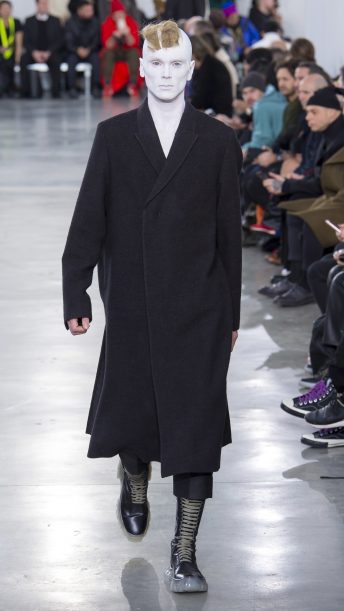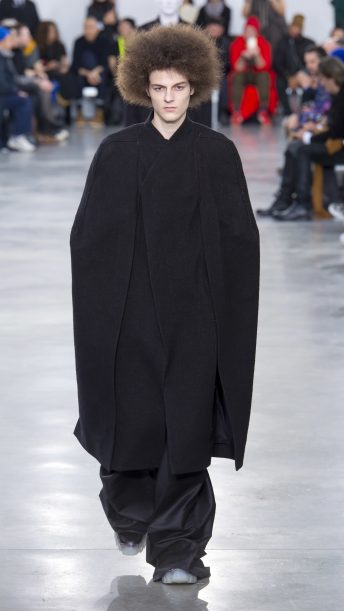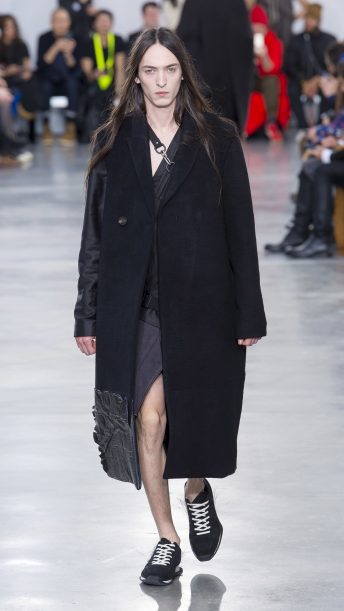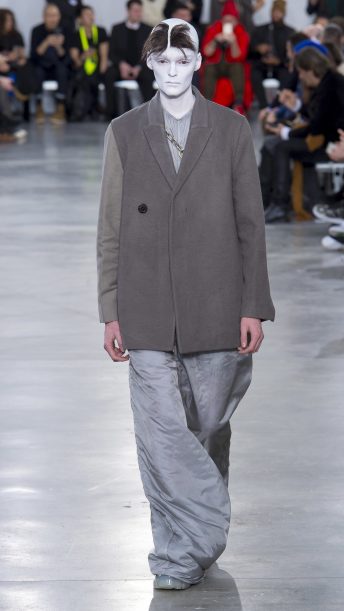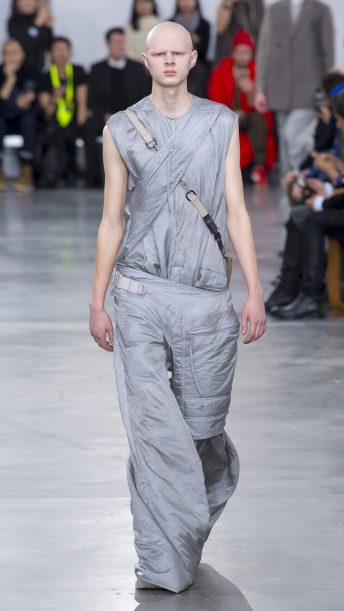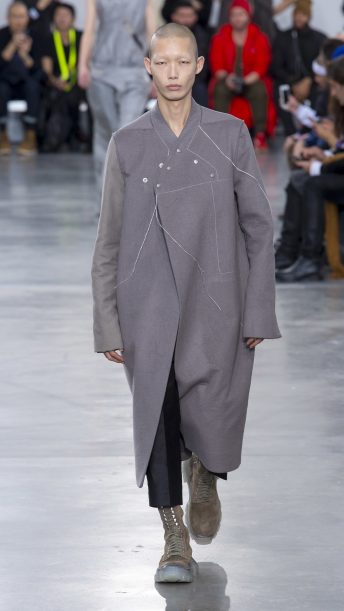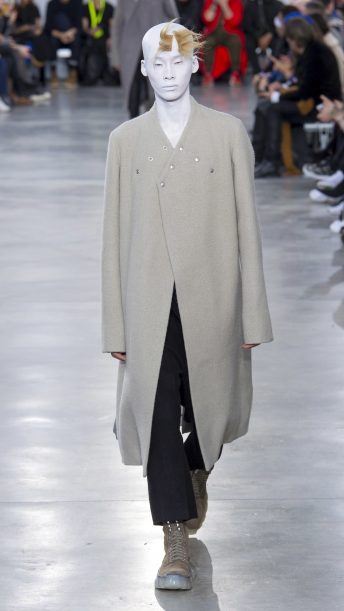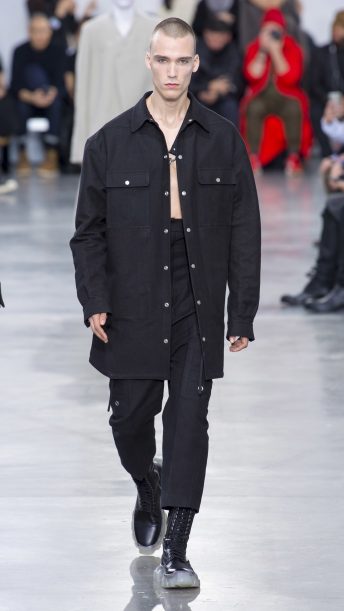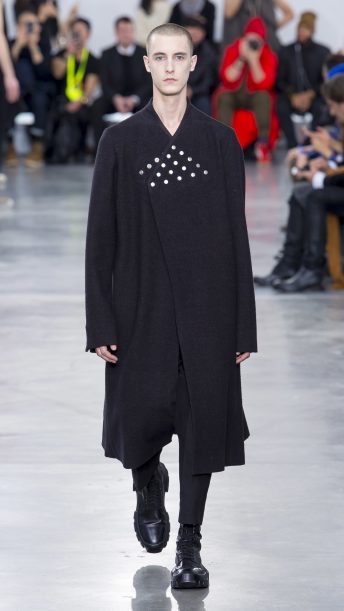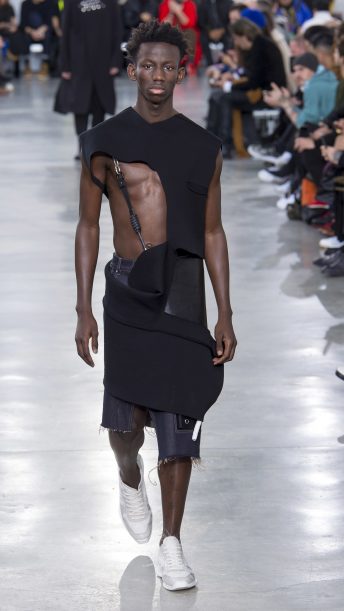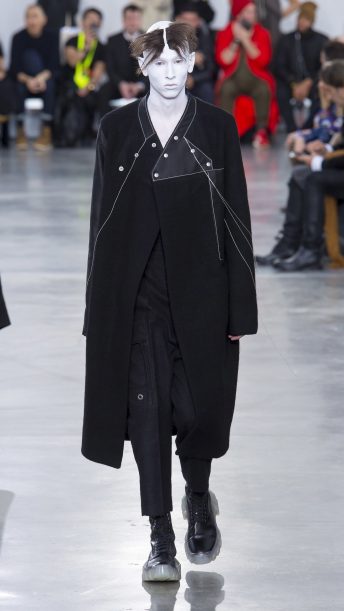The lights were so turned up and the “terror techno” so pumped up that many in the audience wore slight fixed winces during this unrelenting Rick Owens show. The collection was titled “Sisyphus” after the murderous Corinthian king whose Zeus-bestowed punishment made him a byword for repeated acts of apparently endless futility.
For Owens, “Sisyphean” might well define granting post-show interviews with “douche” editors who haven’t fully read his show notes – hey, come on, it was a very busy schedule today! – but there was a more fundamental frustration at play, too. As he explained:
“I think we’re entering this period of conservatism and creative smallness. And that’s me being very judgmental, but it’s frustrating. I’ve had a lot of resistance in things that I’ve wanted to do creatively – technical resistance – and it kind of discourages you from trying to create things.
But then I think, ‘Why do I think that my stuff is so worth telling that I have to force it?’ And then that makes me think of aggression: How much does it take to really be a designer; to insist that you be listened to?”
That self-interrogation is part of the process that makes Owens the most authoritatively distinct designer at work today. Under that light so bright it seemed to leak behind your eyes into your brain and the techno – a remix of “Energize.exe” by DJ Speedlap – he was insisting upon our full attention.
Many of the looks appeared to have been torn off the body, unstitched and then reassembled. Roughened hems lined the sides of many of the cross-body chaps, dresses, and tunics that were often arranged to reveal the flesh below and sometimes held in place by chains. Extravagantly oversize laminated parkas, padded, enveloping cloak-y habits, plus wide slouchy pants with waves of break at the ankle were all unmistakeable in their provenance. There was an almost incongruous high-revered notch lapeled coat story that ran through the collection; their full skirts and sometimes laminated or painted detailing only half obscured the careful disorder beneath them.
For footwear, there was a back and forth between a big zipped Romper Stomper boot which in brown came with a bulging semi-transparent sole and a sneaker that at first looked prosaic. Only when you really gave them some eye did you observe the fronds of hollow plastic tufting that shimmered in the light, and which was used in greater abundance on a ruched, almost frostbitten green sweater near the close. Of that sneaker, called the Georunner, he said:
“I wanted them to be really generic and like almost Kmart, the shoes. Because I’m a little tired of bombastic sneakers. It’s funny how sneakers became the male corsage of this contemporary culture.”
One strongly attractive fabric was a softly felted-looking dark olive material that Owens said was based upon a long-cherished Berber blanket. He added: “I’m trying to do as many exclusive fabrics that we develop ourselves, with people that we’ve known from the beginning. I’m trying to make all of the collection exclusive: making things as profoundly mine as possible. If I could water the cotton with my tears, then I would!”
He was (almost) joking. For Rick Owens, the product is the struggle and vice versa: He might as well just get used to rolling that boulder.
This article first appeared in Vogue.com.


